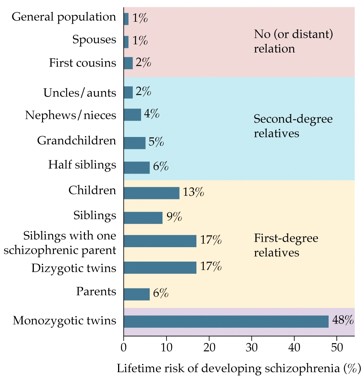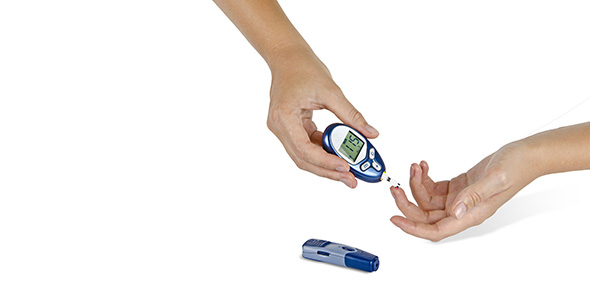Related Flashcards
Cards In This Set
| Front | Back |
|
What is a psychological (or
mental) disorder? What factors
influence our definition of “abnormal” behavior?
|
- depends on time and culture- generally refers to behavior that is considered to be atypical, disturbing, maladaptive, unjustifiable
- 1800's: consised as a sickness that could not be diagnosed and treated |
|
Historically, what are the
three different approaches that have been taken to addressing the problem of
mental disorders? In particular,
what is meant by the medical model and the bio-psycho-social perspective? (How are they different?)
|
- acknowledgment that all behavior arises from the interaction of nature and nurture- a disorder may be due to either one of the other or BOTH!
|
|
What is the DSM-IV? What kind of information does it
contain about mental disorders?
|
- defines 16 major categories of "mental disorder"
describes them in terms of: 1. symptoms. 2. prognosis3. appropriate treatment |
|
What social and ethical
problems are associated with labeling an individual as having a particular
psychological disorder?
|
- diagnosis is important for getting appropriate treatment and health insurance
- HOWEVER, once identified as having a mental disorder, a patient may be subject to bias an stereotyping |
|
What are the five major
types of anxiety disorders discussed in lecture? What are their symptoms and how prevalent are they? (You don’t need to know the exact
prevalence, but you should have a rough idea how common they are.)
|
1. Panic Disorder- intense terror episodes w/ physical symptoms (agoraphobia) 2. Generalized Anxiety Disorder (GAD)- persistent state of apprehension and ANS arousal3. Phobias- irrational fear of a subject, object, activity, or situation. 4. Obsessive- Compulsive Disorder- inability to control repetitive thoughts or actions5. Post Traumatic Stress Disorder (PTSD)- persistent, heightened state of anxiety that develops after exposure to a terrifying event or ordeal
prevalence: 2-10%more common in womenbecoming more common... |
|
What are some of the
proposed causes of anxiety disorders?
|
The Learning Perspective: anxiety is learned an maintained primarily through classical conditioning, stimulus, generalization and reinforcementThe Biological Perspective: anxiety disorders correlate with overactive frontal lobes and amygdala, partly heritable, and many phobias may be adaptive
|
|
What are the similarities and differences between the learning perspective and the biological perspective?
|
Both deal with how anxiety disorders arise
learning says its the outside worlds that influences us. biological says the anxiety is already within us |
|
Overactivity in what part of the brain is associated with anxiety disorders?
|
Frontal lobes and amygdala
|
|
What is major depression? What
are its important defining characteristics? (i.e., that distinguish it from more common forms of
temporary depression). Are men or
women more likely to experience major depression? Who is more likely to commit suicide?
|
- prolonged feeling of worthlessness and diminished interest and pleasure in most activities w/ no apparent cause- UNIPOLAR- factors about 80% of suicides- men are more likely to commit suicide (more successful at it)
|
|
What is bipolar disorder? How
does it differ from major depression? In terms of symptoms?
Prevalence? Gender
differences? Genetics?
|
- Manic Depression- alternating periods of depression and mania (hyperactive, impulsive, wild behavior) - no gender difference- strong genetic component
|
|
What evidence exists for
the role of genes and biology for mood disorders? What is the social-cognitive perspective?
|
- Biologically, there is a strong genetic predisposition, especially for bipolar disorder- correlates with reduced activity of serotonin and norepinephrine + reduced frontal lobe activity
- belief that depression is a vicious cycle fed by self-defeating beliefs- negative interpretations of events encourage negative moods. |
|
What is schizophrenia and what are its most prominent
characteristics? How prevalent is
it, and what age group is most susceptible?
|
- psychotic disorder characterized by delusions, disordered thinking, and bizarre behavior- 1-2% - no gender of racial differences- onset occurs at young adulthood
|
|
What types of brain
abnormalities are observed in schizophrenics and what neurotransmitter is
thought to be involved? What do
studies about the heritability of schizophrenia tell us about its causes?
|
 + - excess of behavior- - poverty of behavior - overactivity of dopamine (in the nucleus abumbens) - enlarged ventricles/decreased temporal lobe volume - it's GENTIC: high concordance rate for identical twins |
|
What evidence exists for
environmental causes of schizophrenia?
In particular, why do some researchers believe that prenatal factors may
play an important role?
|
- viral infections, prenatal complications and flu epidemics assiciated with higher rates. - does not correlate with parenting skills
|
|
What are the defining
characteristics of personality disorders?
|
Characterized by maladaptive behavior patterns (excluding anxiety and depression) that impair social functioning
Cluster A: odd behavior- paranoids, schizoid, schizotypalCluster B: erratic, overly dramatic- narcissistic, borderline antisocialCluster C: anxious- compulsive, avoidance, dependent |





